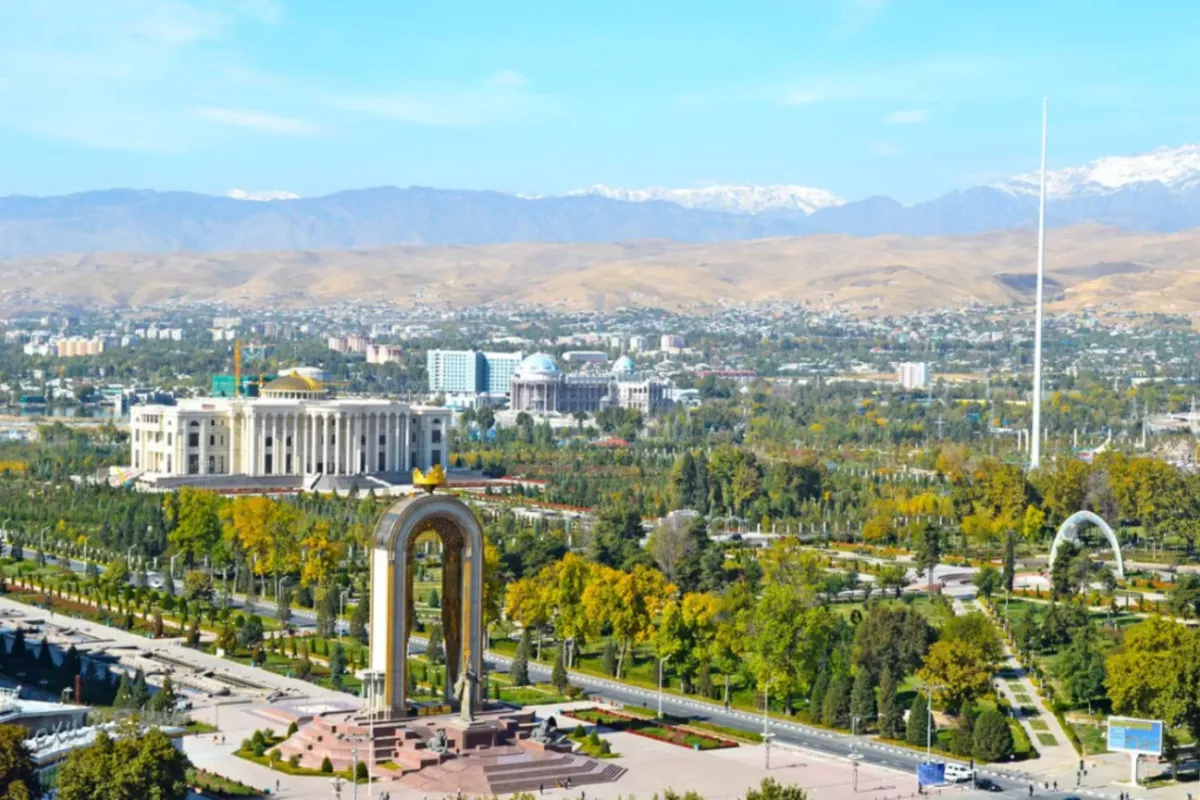
photo: Asia Plus
Five years after Canadian researcher and traveler Christian Bleuer identified 25 major hurdles facing Tajikistan’s tourism industry, the country has made tangible progress in several areas. Yet, many systemic obstacles continue to hold back its potential.
While no sweeping reforms have occurred since 2020, advancements in digitalization, hospitality standards, and infrastructure are reshaping the visitor experience-albeit gradually, The Caspian Post reports via Tajik media.
Areas of Notable Progress
Digital Access & Services
Tajikistan has embraced some aspects of digital transformation, making travel logistics easier. The introduction of eSIMs, online visa applications, and improved booking platforms has helped streamline the planning process for international visitors.
Infrastructure Improvements
Selective upgrades in infrastructure-including new air routes and the partial reconstruction of mountain roads-have improved connectivity to hard-to-reach regions.
Service Quality
The growing influence of online reviews and increased competition have made it easier for travelers to find reliable accommodations and dining options, especially in urban areas.
Promotion Through Social Media
Social media platforms, travel influencers, and YouTube creators have been more effective in promoting Tajikistan abroad than traditional government campaigns.
Visa & Registration
The e-visa system has simplified entry procedures, and while some bureaucratic friction remains, the process is now more accessible. Tourist registration is less burdensome than in the past.
Navigation & Tourist Information
The growing use of Google Maps and mobile travel apps has improved navigation in cities like Dushanbe and Khujand. Tourist information centers have opened in Dushanbe and Khorog, although a national network is still lacking.
Transportation
Online taxi services now operate in Dushanbe, and sections of the M41 highway have been rebuilt. However, rural and mountainous transportation remains unreliable and difficult, particularly in winter.
Hospitality Sector
Dushanbe has seen an uptick in modern hotels and international-style restaurants, but mid-range rural accommodations remain underdeveloped, leaving a gap for nature-oriented and eco-tourism travelers.
Banking & Payments
In the capital, banking services have improved, but tourists still struggle with currency exchange and card payments outside of major cities.
Air Connectivity
Thanks to the Open Skies policy, new flight connections to cities such as Beijing, Xi’an, Tashkent, and Samarkand have been introduced. Yet, high airfare costs continue to discourage broader tourist access.
Tour Guide Training
While new training programs have emerged, the country still faces a shortage of qualified, multilingual guides.
Corruption & Border Harassment
Some improvement has been observed at border crossings and in central areas like Dushanbe, but travelers still report corruption and harassment in more remote regions.
Persistent and Emerging Challenges
Despite these gains, several fundamental issues remain unresolved:
Internet & Connectivity
Tajikistan ranks last in Central Asia in both mobile and fixed internet speeds. As of 2025, mobile internet speeds remain below 24 Mbps, far behind Uzbekistan (55 Mbps) and Kazakhstan (91.7 Mbps). Fixed broadband is also among the slowest in the world, ranked 117th globally.
Environmental Concerns
Waste management continues to be a pressing issue. Litter is visible in both urban areas and remote landscapes, undermining the country’s appeal as an eco-tourism destination.
Closed Borders and Route Limitations
The Jirgatal border crossing with Kyrgyzstan remains closed to foreign nationals.
A proposed shortcut to the Pamir Mountains via Rasht Valley remains stalled, forcing travelers to take the longer, avalanche-prone Kulob-Khoburabot route, often impassable in winter.
Drone Use Still Prohibited
A formal ban on drones, coupled with a lack of a licensing framework, continues to limit aerial photography and video tourism, crucial tools in modern destination marketing.
Lack of Coordination
The tourism sector remains fragmented. Hotels, taxis, and tour operators often operate independently, with no unified strategy or service standards.
Deeper Structural Barriers
Some limitations appear resistant to policy reform:
Limited Historical Sites: Unlike Uzbekistan, which boasts globally recognized historical monuments, Tajikistan lacks large-scale heritage attractions, making it more of a supplementary stop on Central Asian itineraries.
Proximity to Afghanistan: The volatile security situation across the border prevents the opening of potential transit routes, such as through the Wakhan Corridor.
Geographic Isolation: Surrounded by the Pamir and Tian Shan mountain ranges, Tajikistan's rugged terrain and landlocked geography raise the cost and complexity of infrastructure development.
Urban Planning Issues: Unregulated construction, tree cutting, and destruction of historical districts in cities like Dushanbe are eroding urban charm and heritage.
Tourism Remains on the Global Sidelines
According to the National Tourism Development Strategy (to 2030), Tajikistan has yet to fully transition from a post-Soviet tourism model to a competitive, market-driven system.
Key structural obstacles include:
Weak Investment Climate: Investor interest in the tourism sector remains limited, especially in hospitality and transportation.
Low Service Standards: Poor customer service still deters repeat visitors and positive word-of-mouth.
Limited Global Awareness: Outside niche travel circles, Tajikistan is still largely unknown internationally. Available online information is often outdated or inaccurate, making trip planning difficult.
Minimal Private Sector Involvement: Government efforts alone cannot drive growth. Without stronger private sector participation, tourism’s potential as a job creator and alternative to labor migration remains untapped.
Conclusion: Real Progress, But a Long Road Ahead
Since 2020, Tajikistan has made commendable strides in digital accessibility, service quality, and urban infrastructure. However, deeply entrenched challenges-ranging from geographic isolation to limited coordination and investment-continue to hamper the sector’s full development.
To break through as a viable tourism destination, Tajikistan must:
Commit to long-term, sustainable reforms
Foster public-private partnerships
Emphasize its natural strengths: pristine landscapes, mountain adventures, and authentic cultural experiences
Only by addressing both the surface-level inefficiencies and structural constraints can Tajikistan hope to shift from the margins of the global tourism map to a more central position in Central Asia’s travel landscape.
Share on social media